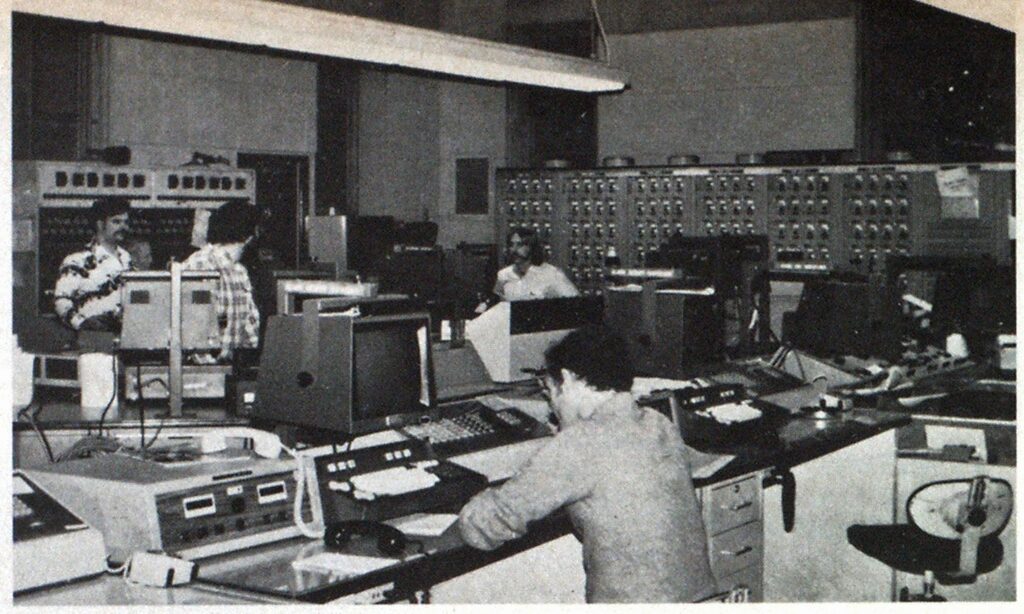
Computerized Dispatching in Brooklyn

Photos by Warren Fuchs
A recently installed multimilliondollar computer-assist dispatch system is speeding the work of dispatchers in the Brooklyn communications office of the New York Fire Department.
Fire department operations in New York City present a complex problem in the deployment of men and equipment. More than 350 pieces of apparatus are stationed throughout the city’s five boroughs. In 1976, there were more than 425,000 incidents, including over 207,000 false alarms—an average of nearly one alarm every minute. The variety of demands for service and the spiraling number of alarms required reassessment of the department’s response and deployment policies. The department needed new methods of predicting alarm incidence and more sophisticated methods of assigning units to incoming alarms.


To improve the manually operated dispatch system, the computer-based management information and control system (MICS) was introduced to assist in the dispatching of units to alarms.
Installed in Brooklyn
Last October, the Brooklyn communications office became the first in the city to have a management information and control system on line 24 hours a day. The MICS can handle three alarms a minute and the complete cycle from receipt of alarm and selection of equipment to transmission of alarm via hard copy printout to a firehouse takes 40 seconds or less.
The prime objective of the computer-based MICS is to optimize the allocation of fire department resources and consequently improve the effectiveness of department operations. The system will increase operational effectiveness by improving the quality and speed of both dispatch notification and deployment of forces in routine and emergency situations.
The Brooklyn MICS has dual PDP 11/45 computers supported in a backup mode by dual INTEL 8080 micro processors. This system is housed in a separate, environmentally controlled room.
The computer maintains the current status of incidents and units throughout the borough. Using programmed rules, it computes the quickest and most suitable response to each alarm and displays it for the decision dispatcher to approve or modify, according to the situation. The computer indicates the need for redeployment of companies and recommends specific moves, which are subject to review and modification before execution by the decision dispatcher.
Six work positions
The computerized dispatch system brought about a fixed position work station concept. This consists presently of six positions:
The supervisor oversees the entire operation from his position, assigns modes to CRT terminals, monitors performance, can act in other modes if necessary and specifies system startup procedures.


The decision dispatcher accepts or changes recommended dispatches, effects relocation based on systems recommendation, exercises manual relocation, confirms duplicate alarms and changes unit status and reassignments.
The voice dispatcher checks units that have not acknowledged the alarm teleprinter dispatch message within the 20-second time limit.
The alarm receipt dispatcher (as many as four can operate at one time, depending on activity) enters via a CRT alarms received through ERS and telephone.
The radio out dispatcher communicates with units on the air, notifies units to respond, and receives preliminary progress reports and requests for additional units.
The radio in dispatcher enters into the system via a status entry panel the status of units, all 10 codes for incidents, requests for additional units, extra alarms and closed incidents.
Alarm flow process
The system supports several methods of receiving alarms—mechanical street boxes, electronic street boxes, telephone, verbal alarms from units via radio or from a firehouse.
Mechanical boxes are brought directly into the MICS computer and appear also at the decision dispatcher’s position on a box alarm readout system (BARS).


Electronic street boxes, a new type of street box known as the emergency reporting system (ERS), transmit a voice alarm directly to the alarm receipt dispatcher at the same time the coded box number is entered in the computer.
Telephone alarms are entered into MICS by a dispatcher who is in contact with the citizen.
Verbal alarms from a firehouse are entered in the system through the selector panel in the firehouse. Verbals received via radio are entered by the radio in dispatcher through the status entry panel.
Decision by dispatcher
Based on availability and programmed rules, MICS selects and displays a dispatch assignment to the decision dispatcher for approval or modification. After the decision dispatcher approves or modifies the response assignment, an alarm message is sent to the assigned companies.
Simultaneously with the decision dispatcher’s release of the alarm, the radio dispatcher receives a hard copy, printed fire ticket, indicating all information relative to the incident as well as a listing of all responding units.
Two electronic devices have been installed at the watch desk in each Brooklyn fire station. One is the alarm teleprinter and the other is the selector panel. The teleprinter provides responding units with printed alarm messages, relocation orders and administrative messages. The alarm message, an additional aid to the fire officer, contains information which he can tear off and take with him on the apparatus. He can also use it for making out his reports.
Rapid acknowledgement
The selector panel provides a rapid means of acknowledging the receipt of alarms, reporting unit status, retrieving garbled messages and testing the equipment.
The start of a message receipt at the fire station is announced by an audible signal that sounds intermittently. The hard copy message is printed out on the teleprinter as the signal sounds. The audible signal is turned off automatically when an acknowledgement is sent.
The computer is programmed to expect a response from the units selected within 20 seconds of the alarm transmission. Failure to acknowledge receipt of an alarm within 20 seconds will result in a voice alarm check with the unit to determine if the alarm was received correctly.
Approval was given late last year to expand MICS to cover all five boroughs of New York City. In the more sophisticated system, the computer will be based at a central site and each borough communications office will remain at its remote location.

